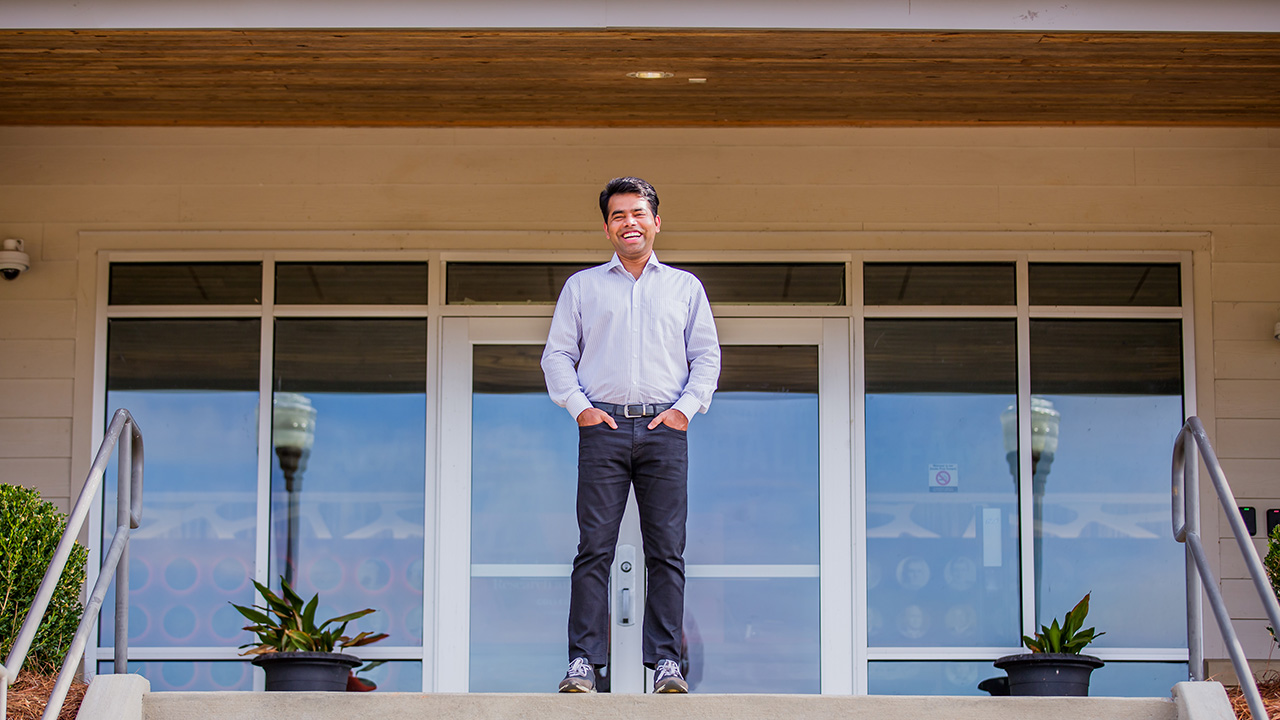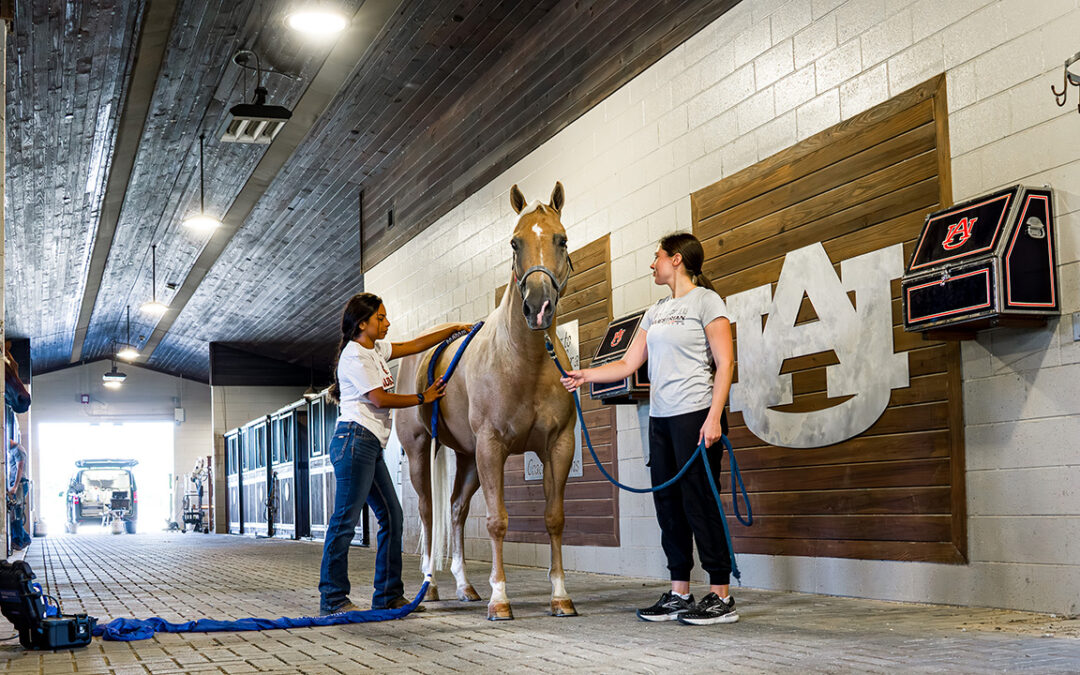By Machaira Christopher
When Dr. Rana Waqar Tabish came to Auburn to begin working toward his PhD, he already had one doctorate under his belt.
After treating poultry for diseases as a Doctor of Veterinary Medicine (DVM) back home in Pakistan, Tabish decided to pursue a doctorate in poultry science to prevent disease before it happens.
Rana stands in front of a sign that says Poultry Hall of Fame
After treating poultry for diseases as a veterinarian back home in Pakistan, Dr. Tabish decided to pursue a doctorate in poultry science at Auburn to prevent disease before it happens.
“I’m researching necrotic enteritis, which is a disease that was troubling poultry I treated back in Pakistan,” he said. “Now I’m hoping to reduce the likelihood of poultry needing that intervention.”
Tabish works in Dr. Rüdiger Hauck’s lab, conducting research in the Charles C. Miller Jr. Poultry Research and Education Center, housed in the College of Agriculture. Like Tabish, Hauck is a DVM-turned-researcher with a passion for poultry health.
Optimizing poultry production
The impetus for stopping disease in poultry before it starts is high, as traditional treatment methods, such as antibiotics, should not be used in poultry that will be consumed by humans due to the risk of building antibiotic resistance.
With restrictions on antibiotic usage, innovative solutions are required to ensure there is enough poultry to meet the needs of the growing world population.
“Along with an increase in population comes an increase in pressure to fulfill the protein and food demands of people,” Tabish said. “However, increasing production without having the ability to treat diseased poultry with antibiotics is difficult. Our research aims to create strategies to reduce the severity and incidence of the disease.”
This research is made possible by the Miller Poultry Research and Education Center, a state-of-the-art, 30-acre facility where students apply their studies outside of the classroom.
The facility boasts the Alabama Poultry Hall of Fame, the National Poultry Technology Center, the Poultry Infectious Disease Biocontainment Research Facility and the Alabama Poultry and Egg Association Feed Mill and Animal Nutrition Building, as well as several poultry houses, a hatchery and a processing plant.
While all these resources are essential to Tabish’s work, he said the most useful tool the center has to offer is the collaboration it facilitates.
“The most important resource you want to have in a department is the ability to work with people whose research is different from your own,” he said. “For instance, my research is on poultry health, and at the center, I work with people studying poultry nutrition to get a different perspective. Those connections make such a difference, and it’s because we’re all researching in the same facility that they exist in the first place.”
Healthier future
That emphasis on collaboration has sparked a more holistic approach to poultry health and wellness.
“With consumers finding the welfare of the animals increasingly important, Auburn is doing a great job with developing strategies to ensure the animals are happy and healthy,” Tabish said. “Our efforts to maintain the optimal poultry production and quality are guided by the pursuit of a healthier supply chain.”
Though his research is focused on poultry health, the impacts of improving animal welfare extend to public health outcomes. And after three busy years of research, Tabish intends to defend his dissertation this fall.
“The past few years have been the best years of my academic journey, and I couldn’t have asked for a better experience,” he said. “Everyone I have worked with and interacted with has been supportive and welcoming, and I am excited to take the skills I have gained with me as I continue my research in poultry health.”




